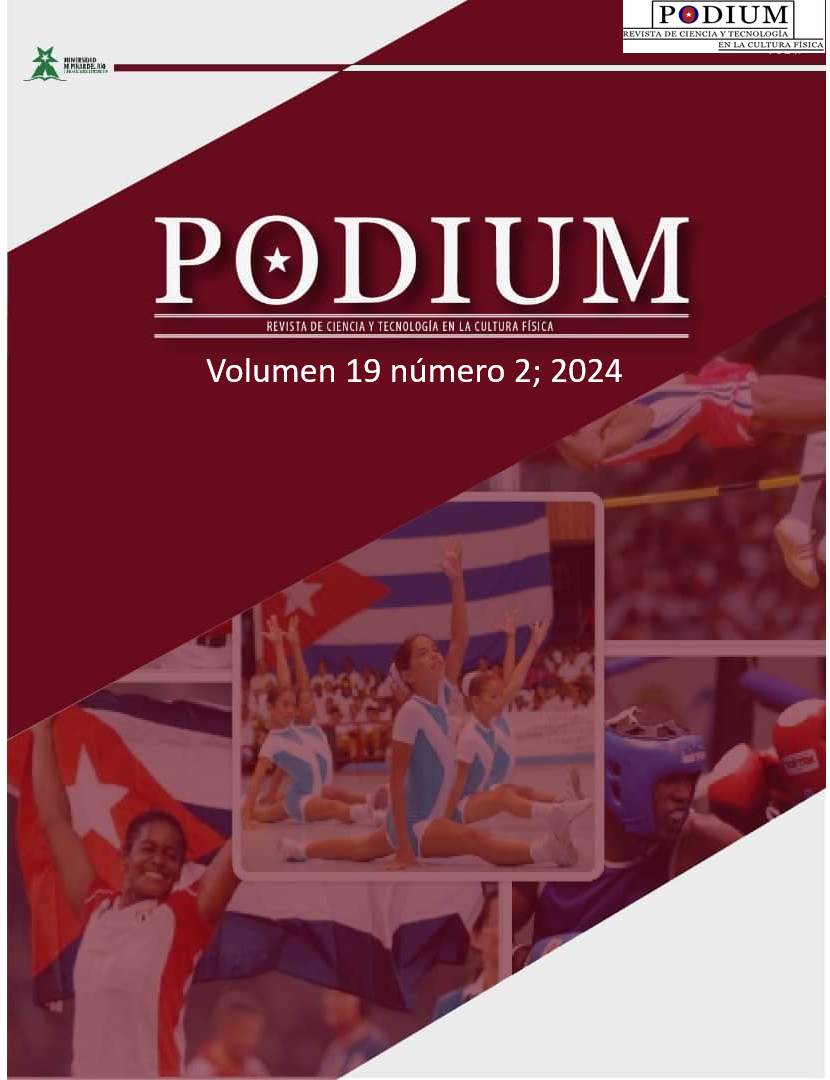La danza afroecuatoriana: alternativa metodológica para la inclusión de estudiantes con hiperactividad en la Educación Física
Contenido principal del artículo
Resumen
Se reconoce que la danza afroecuatoriana es un lazo de conexión con los ancestros y la identidad, y aporta una educación del movimiento que facilita, a su vez, el desarrollo de valores educativos en torno al tratamiento del cuerpo; ello favorece la motivación hacia la práctica de la actividad física continuada. El objetivo de la investigación radica en proponer la danza afroecuatoriana como una alternativa metodológica para la inclusión de estudiantes con hiperactividad y se contextualiza en décimo año, con un total de 35 estudiantes, y una muestra de un estudiante con trastorno por déficit de atención e hiperactividad, de la Básica Superior de la Unidad Educativa "José Otilio Ramírez Reina", provincia de Esmeraldas en Ecuador. El estudio, se sustentó en un enfoque cuantitativo-cualitativo y el método dialectico-materialista; se emplearon métodos del nivel teórico como el histórico-lógico y el análisis-síntesis y del nivel empírico el análisis documental, la observación y la encuesta, para interpretar las derivaciones obtenidas en cada etapa que transitó desde el nivel exploratorio, descriptivo, hasta llegar a una explicación del fenómeno investigado. Los resultados revelan el insuficiente reconocimiento de la danza afroecuatoriana para la inclusión de estudiantes con este trastorno, así como la escasa producción científica relacionada con la temática. Del estudio realizado se concluyó que la danza afroecuatoriana constituye una vía expedita para un mejor conocimiento, disfrute y preservación de la identidad, en estos estudiantes.
Descargas
Detalles del artículo

Esta obra está bajo una licencia internacional Creative Commons Atribución-NoComercial 4.0.
Citas
Alcivar-Alcívar, J. C., and Zambrano-Montes LC (2021). Interdisciplinary teaching strategies in meaningful learning for students in single-teacher schools. Dom. Cien., ISSN: 2477-8818, 7(6), October-December 2021, pp. 1144-1165 http://dominiodelasciencias.com/ojs /index.php/es/index
Castillo-Paredes, A., Montalva Valenzuela, F., and Nanjarí Miranda, R. (2021). Physical Activity, Physical Exercise and Quality of Life in children and adolescents with attention deficit and/or hyperactivity disorder. Habanera Journal of Medical Sciences, 20 (5), e3714. https://revhabanera.sld.cu/index.php/rhab/article/view/3714/2963
Conesa -Ros, E., and Angosto, S. (2017). Body expression and dance in secondary and high school physical education. Sports Psychology Notebooks, 17(2), 111120. https://revistas.um.es/cpd/article/view/301961
Dallal, A. (2020). The elements of dance. Mexico: UNAM, General Directorate of Publications and Editorial Development. https://books.google.com.cu/books/about /Los_elementos_de_la_danza.html?id=vUjcDwAAQBAJ&source=kp_book_description&redir_esc=y
Hernández Sampieri, R., Fernández Collado, C., and Baptista Lucio, P. (2018). Research methodology (Vol. 4, pp. 310-386). Mexico: McGraw-Hill Interamericana.
Gómez Valdés, A., Planes Rivera, D. de la C., and Gómez Ledesma, Y. (2019). Methodological actions to contribute to the Inclusive Physical Education process: An approach to the topic. Mendive Magazine, 17(1), 84-96. http://scielo.sld.cu/scielo.php?script=sci_abstract&pid=S181576962019000100084&lng=es&nrm=iso&tlng=es
Hernández-Beltrán, V., González-Coto, VA, Gámez-Calvo, L., Luna-González, J., and Gamonales, JM (2022). Proposal for a teaching unit for Physical Education: "sports orientation as an inclusion tool for students with ADHD." E-Motion: Journal of Education, Motor Skills and Research, (19), 60-81. https://doi.org/10.33776/remo.vi19.7220
Ibarra E., Aracelly L., and Rivera, AM (2019). Formative and identity potentials of Colombian dance. Conrado, 15 (68), 135-141. Epub September 2, 2019. http://scielo.sld.cu/scielo.php?script=sci_arttext&pid=S1990-86442019000300135&lng=es&tlng=es .
Quintero-Olivas, DK, Romero Pérez, EM, and Hernández- Murúa , JA (2021). Quality of family life and childhood ADHD. Multidisciplinary perspective from physical education and social work. Physical Activity Sciences Magazine, 22 (1). https://doi.org/10.29035/rcaf.22.1.1
Matos, M., Smith, E. and Muñoz A. (2020). Folk dances: a way of learning and educating from a sociocultural perspective. 2020, Retos, 38, 739-744 © Copyright: Spanish Federation of Physical Education Teachers' Associations (FEADEF) ISSN: Printed edition: 1579-1726. https://recyt.fecyt.es/index.php/retos/article/view/73725
Muntaner-Guasp, J., Mut-Amengual, B. and Pinya -Medina, C. (2022). Active methodologies for the implementation of inclusive education. Educare Electronic Magazine, 26(2), 85-105. https://www.scielo.sa.cr/scielo.php?script=sci_arttext&pid=S140942582022000200085
Olave , K.J. (2022). The Afro-Esmeralda dance as a symbol of resistance of the black maroon. Obtained from University of the Arts: https://dspace.uartes.edu.ec/handle/123456789/1048
Paredes, AC, Lago, AC, Gacitúa, CN, Pacheco, RGP, and Wilkomirsky , A. (2023). Psicoballet, a clinical tool for social integration with benefits at a biopsychosocial level: A review of the literature. Challenges: new trends in physical education, sports and recreation. Retos Magazine, (47), 831-841 https://recyt.fecyt.es/index.php/retos/article/view/94228
Páez Basabe , M., Arcia Melgarejo, S., Escalona García, C., Vargas Géliga, E., and Darias Ávila, N. (2022). Brochure of compensatory corrective pre-sports games for students with intellectual disabilities. Podium. Podium Magazine , 17(3), 1006-1017 https://podium.upr.edu.cu/index.php/podium/article/view/1334
Rivera, AL, and Remón, Á. LC (2017). Benefits of physical-sports activity in boys and girls with ADHD. EmásF: digital magazine of physical education, (44), 63-78. https://dialnet.unirioja.es/servlet/articulo?codigo=5807535
Soler, NS, and Ramírez, FG (2023). Physical Education teachers in active v/s in training: level of knowledge about Attention Deficit and Hyperactivity Disorder in schoolchildren. Challenges: new trends in physical education, sports and recreation, (50), 421-427. https://dialnet.unirioja.es/servlet/articulo?codigo=9063942


